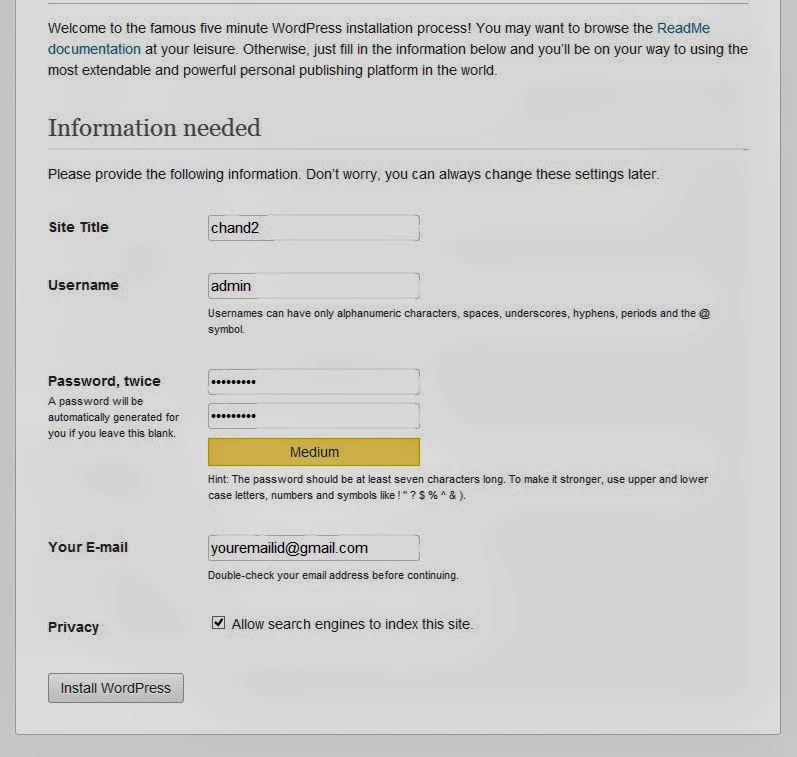http://localhost/xampp/
Step 4: Select the link called "phpMyAdmin" on the lower left side of the menu or by entering the following URL: http://localhost/phpmyadmin/
Step 5: At the phpMyAdmin main page, there will be an area in the middle of the screen called "MySQL localhost". From this section a new database will be created for use by the Wordpress installation.
- In the field labeled "Create new database" enter the name "wordpress". From the dropdown labeled "Collation" select "utf8_unicode_ci". Then press the button labeled "Create".
- If the database entry was created successfully the message "Database wordpress has been created" should be displayed.
Step 6: Using the Windows Explore navigate to the xampp\htdocs\wordpress directory. Open the file called "wp-config-sample.php" within the wordpress directory.
Step 7: Once the file has been opened edit the following lines:
/** The name of the database for WordPress */
define('DB_NAME', 'putyourdbnamehere'); ==> change 'putyourdbnameheree' to 'wordpress'
/** MySQL database username */
define('DB_USER', 'usernamehere'); ==> change 'usernamehere' to 'root'
/** MySQL database password */
define('DB_PASSWORD', 'yourpasswordhere'); ==> change 'yourpasswordhere' to ' ' (leave it blank)
Step 9: Go to the Wordpress Installation page by opening a web browser and entering the following URL:
http://localhost/wordpress/wp-admin/install.php
Step 11: If the information in the previous step was entered correctly there should be a new screen titled "Success!". This screen presents a username called "admin" and a temporary password. It is a randomly generated password so it is important to make note of it until a new password has been selected. Press the button labeled "Log In".
Step 12: At the Log In screen type the word "Admin" in the field labeled "Username" and type the temporary password, which was created in the previous step, in the field labeled "Password". Press the button labeled "Log In".
Step 13: If the log in was successful then the Wordpress Dashboard appears. There is a notice which states that an auto-generated password is being used and to change it to something easier to remember. The link labeled "Yes. Take me to my profile page" allows the temporary password to be changed. Once the password has been changed editing of the content and themes can begin.



.jpg)
.jpg)
.jpg)
.jpg)
.jpg)
.jpg)
.jpg)
.jpg)
.jpg)
.jpg)





.jpg)

He is a professional hacker, he is absolutely reliable and I strongly recommend him for any types of hacking jobs you require. why i said this is because I have engaged him severally in various hacking jobs and he has never disappointed me nor any of my friends who have hired him also, He has really proven himself to be a professional and a reliable hacker, He can help you out with any hacking jobs including this:
ReplyDelete-Cell Phones hacking (remotely)
-Credit Repair
-Bitcoin Recovery (Any type of Cryptocurrencies)
-Make money from Home (Any Countries)
-Social media Hacking
-Website Hacking
-Erasing of criminal Records (Any Countries)
-Grade Change
Email him via: hackingsetting50@gmail.com